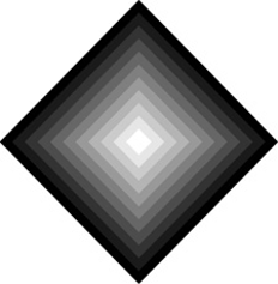Java Reference
In-Depth Information
Solution 92: Twisted Pair
A superficial analysis suggests that the program shouldn't compile. The anonymous class inside
reproduce
TRies to invoke the private method
name
from the class
Twisted
. One class can't invoke
a private method of another, can it? If you tried to compile the program, you found that it compiles
without a hitch. Within a top-level type— in this case,
Twisted
— all the local, inner, nested, and
anonymous classes can access one another's members without any restrictions [JLS 6.6.1]. It's all
one big happy family.
With that understanding, you might expect the program to print
reproduce
, because it invokes
printName
on the instance
new Twisted("reproduce")
, which passes the string
"reproduce"
to its
superclass constructor to be stored in its
name
field. The
printName
method invokes the
name
method, which returns the contents of this field. But if you ran the program, you found that it prints
main
. Now why would it do a thing like that?
The intuition behind this behavior is that
private members are never inherited
[JLS 8.2]. In this
case, the
name
method is not inherited into the anonymous class in
reproduce
. Therefore, the
printName
invocation in the anonymous class must refer to the method in the enclosing (
"main"
)
instance rather than the current (
"reproduce"
) instance. This is the smallest enclosing scope that
contains a method of the correct name (Puzzles
71
and
79
).
This program violates the advice of
Puzzle 90
: The anonymous class inside
"reproduce"
is both an
inner class of
Twisted
and extends it. This alone is sufficient to make the program unreadable.
Throw in the complexity of invoking a private superclass method, and the program becomes pure
gobbledygook. This puzzle serves to reinforce the lesson of
Puzzle 6
:
If you can't tell what a
program does by looking at it, it probably doesn't do what you want.
Strive for clarity.
< Day Day Up >













Search WWH ::

Custom Search